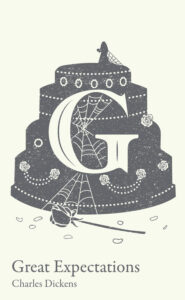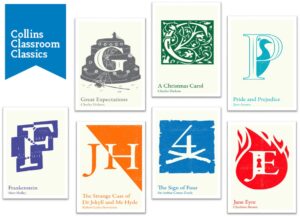When I first started teaching I was advised by a more experienced teacher to avoid the Classics and never teach any novel over 200 pages as it took too long to get through it with a class. I heeded this advice for the first couple of years then decided I was short-changing my students in assuming they wouldn’t want to read a longer novel without consulting them and assuming they would find the language difficult – they did not. It’s easy to be daunted by the size of Great Expectations but it really is such a lovely novel to read with a class. My class found it surprisingly funny and enjoyed watching Pip’s fortunes turn, the cattiness of Estella and the mystery surrounding both Magwitch and Miss Haversham. The following activities and discussion points were the most successful with my pupils and received the best feedback; I hope you enjoy using them.
5 discussion points
- To what extent is Pip’s character an uplifting rags to riches tale?
How does his life change? Is it for the better? Can they reference from the novel where the biggest changes take place?
They might like to also consider or be prompted to discuss whether poverty and strife makes people stronger or demoralises them – there’s some wonderful articles by Jack Monroe on this subject if you’d like to also talk about its impact in modern society. I found them invaluable at presenting an imagine of what poverty really looks like. We then compared it to poverty in Dicken’s time.
‘Let us drink, Thanks of Fortune, and may she ever pick out her favourites with equal judgement’ – does Dicken’s seem to suggest that only good fortune and riches equate to happiness?
- Dickens’ audience by all counts found this novel both comic and hilarious. In pairs find quotes or discuss events that show this. Do you think it is a comedic novel? If not, how would you describe it?
Encourage students to analyse Dickens’ use of characterisation and pull apart his language – how exactly has he made these observations and sayings funny?
- Perhaps one of the most celebrated quotes in the novel is from Estella to Pip:
‘I love you against reason, against promise, against peace, against hope, against all discouragement that could be’
In your opinion is this a romantic quote or one that suggests the relationship will not survive?
Remind students that originally Estella was cold and cruel and only becomes warm after life has treated her badly. Can they find ways to justify her behaviour towards Pip?
- To what extent is Miss Haversham a cruel and evil character?
Structured points to notice and discuss if your students need support are as follows:
- Her plot for revenge (the card game and the way it is a metaphor for how life plays games with us / the game of life)
- Her grooming of Estella to break hearts
- The ways she plays with lives
- How she is punished by Dicken’s both through her death and how she spends the later part of her life begging forgiveness
- Do you feel sorry for her in any way? Can you justify her behaviour?
- In what ways are Pip and Estella similar to each other?
Things to consider may include:
- The fact that they are both orphans
- Similarities in the way they were raised
- Reversal of fortunes
- Characters that interlink their lives
5 Activities
- Creative Magwitch activity
Draw Magwitch in his prison which was in fact an ex war ship that doubled as a prison for overcrowding and a transport method to take prisoners to Australia to toil. Victorian prisons were rife with disease where one in ten prisoners died.
Can they then compare their images with ones of the modern prison system? We watched very carefully edited sections of a Louis Theroux documentary on prisons in LA for this activity which lead to lively discussion and comparisons.
- Pip’s life lessons – a pocket guide
Create a pocket sized guide to lessons in life as taught to us by Pip. Mind map first to gather ideas from the text before creating small guides complete with quotes. These could also be done on computers. What could be included?
- Miss Haversham – in page 68 in Collins Classroom Classics Great Expectations
a). This activity should be started in the early reading of the novel and repeated in later lessons. Read aloud in pairs or small groups and decide which items in the room are the most iconic and symbolic. Which give us the best clues about her life?
b). In a later lesson revise this lesson and compare it to how we feel and what we learn about Miss Haversham, do we sympathise more with her now, ‘he practised on her affection in that systematic way’? After all Dicken’s is keen to point out that she was taken in by ‘a certain man’ what does this insinuate?
c). Can students role play Miss Haversham and this man?
- Character Mapping
On a piece of A3 folded in four, add each character: Pip, Miss Haversham, Estella, Magwitch, Mr Jaggers, John Wemmick, Herbert Pocket and an additional character of their choice of whom they find important to the novel. Use the front and back of the sheet so that each fold represents a character. Whilst reading the novel add quotes or key events with a different colour pen or pencil crayon for each. Annotate the book in the same colour for each character and when writing about them too for easy reference and to help with revision. We had fun deciding which characters would be each colour and discussing the symbolism and connotations of colours as an extension activity.
- Creating a timeline
There is no getting away from the fact that this novel is packed with key events. Creating a timeline with the main 10 events helps enormously. Remember to write them in order and add page numbers and key quotes for each.
By Joanna Fliski
Joanna Fliski has taught English Literature and Language to 11-18 year olds at an urban comprehensive secondary school for 10 years, she had the highest value added score for her students and was nominated for an outstanding teacher award. As well as teaching Drama and Media GCSE she was head of PSHE, trained teachers and is a behavioural specialist. Joanna currently teaches in primary schools in Bristol. She is also a freelance author, writing resources and teacher guides for the Cambridge IGCSE, creating schemes of work and contributing to a number of educational blogs.
Collins Classroom Classics
Just £1.50 each for schools!
New for 2019 are the Collins Classroom Classics: the complete 19th century novels accompanied by introductions and glossaries written by experienced teachers. They are designed to help students understand the context in which each novel was written in.





